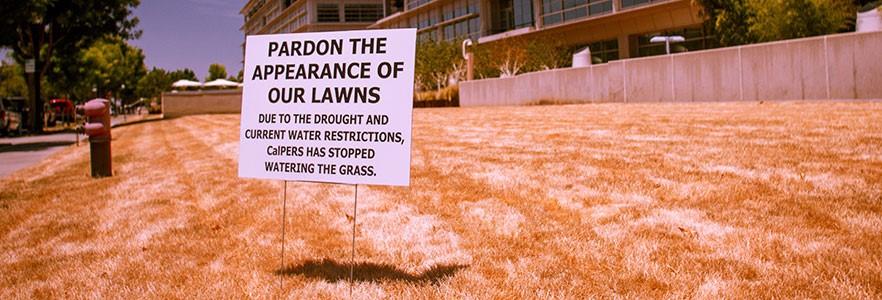
How to help solve the water scarcity trilemma
Posted on: May 2018Martin Shouler
 |
Martin Shouler is a Public Health Engineer at the international engineering consultancy Arup. He works on water and related projects across both Building Engineering and Infrastructure. Martin started his career at the Building Research Establishment (BRE), spending 15 years in the Environment Division, ultimately leading the Public Health Engineering and Water Team. Amongst other things, he was involved in undertaking research and consultancy to support Building Regulations, Water Regulations and assisted in the development of the sustainability assessment method BREEAM. On leaving BRE, Martin joined Arup as head of Public Health Engineering for London and now leads London Water for the firm. In 2003, Martin became the founding Chairman of the Society of Public Health Engineers (SoPHE) which is the professional organisation for public health engineers in the UK and across the globe. He also served as an advisor to the Environment Agency with a special interest covering the water and construction industries. |
WatEf blog 2018 May 1st 2018
How to help solve the water scarcity trilemma

You’ve probably heard about the energy trilemma. Well, the water sector is facing its own trilemma: it needs to allocate increasingly scarce resources of water among citizens, the economy and the environment if it’s to avoid a damaging conflict between them.
Globally, water use is growing at twice the pace of the population. In less than 10 years, it is predicted that two-thirds of people will be living in areas of water stress conditions if a business-as-usual approach to water management continues.
There’s no doubting the seriousness of the situation. The World Economic Forum (WEF) recently revised its most significant long-term risks worldwide. Among the three most likely and most significant risks were failure of climate change adaptation, interstate conflict and water crises.
The WEF defines water crises as “a significant decline in the available quality and quantity of fresh water resulting in harmful effects on human health and/or economic activityâ€. This includes the emerging gap between safe freshwater availability and water demand.
During the period 2012 – 2016, California experienced one of its most severe droughts on record and tensions emerged between citizens, the economy and the environment. The state’s multi-billion dollar almond industry is central to its economy yet it takes 10% of California’s water supply. With mandatory water restrictions introduced for citizens, many questioned whether agriculture’s water use is profligate.
When the drought ended in 2016, the crop fully recovered with the harvest returning to record numbers. So, perhaps a different question to ask is has lessons been learnt to ensure that California is more resilient to future water scarcity issues.
To help answer this question, Arup, with support from the Rockefeller Foundation, is working to develop a City Water Resilience Framework to help cities and their catchments to better withstand shocks and stresses.
Climate change and rapid urbanisation are placing an increasing strain on the world’s water systems. With more than half of the world’s population in cities, working with city governments offers the opportunity to deal with increasing pressures and uncertainty by building the resilience of urban water systems. The Steering Group for the work consists of The World Bank, The Rockefeller Foundation, the University of Massachusetts-Amherst, the Alliance for Global Water Adaptation (AGWA) and The Lloyd's Register Foundation.
The project is aligned with The City Resilience Index (CRI), developed by Arup with support from the Rockefeller Foundation. The CRI articulates the resilience of an urban system in an accessible, evidence-based and measurable way to inform planning, development and investment decisions. The Index has underpinned the 100 Resilient Cities programme, pioneering the concept of resilience worldwide and leading to cities around the world seeking to improve their resilience. Cities from five continents have been selected to contribute to the development of a global framework for water resilience.
Amman, Cape Town, Mexico City, Greater Miami and the Beaches, and Hull were selected because they represent the range of water challenges facing cities around the world. They have also been selected because of their diversity in terms of size of population, geographic location and economic status and because of their commitment to taking a strategic approach to resilience. Four of the five cities are part 100 Resilient Cities – Pioneered by The Rockefeller Foundation, which helps cities around the world become more resilient in the face of physical, social and economic challenges.
As part of this partnership, the project will explore each cities specific water concerns through field research and stakeholder interviews conducted with Arup. Data and findings will be used to establish qualitative and quantitative indicators to measure city water resilience, for use in any city anywhere. The resulting City Water Resilience Framework will be a global standard for water resilience, which enables cities to diagnose challenges related to water and utilize that information to inform planning and investment decisions.
- Amman, the capital city of Jordan with a population of over 1.2 million, is not located near sources of water and regularly experiences drought. The city also experiences unusually heavy rains, leading to flooding in the lower-lying areas of the city.
- Cape Town in South Africa with a population of 3.7 million has been experiencing severe drought, due to three years of low rain fall. Officials have warned that there are fewer than 90 days left before the city’s water supply runs dry.
- Mexico City, the largest of the cities participating, has a population of 21.3 million. The rapidly growing city is heavily reliant on underground aquifers, and is at serious risk of running out of water in the future. Mexico City is also located on land that was once a lake, making it particularly prone to flooding.
- Greater Miami and the Beaches, with a population of 5.9 million, is a coastal location with a high groundwater table and complex canal system, making it particularly vulnerable to rising sea levels. Tidal flooding events are already becoming increasingly common, causing significant disruption.
It is clear that we need to solve the trilemma and balance these often-conflicting demands and these need to be considered in the round. Fortunately there are proven ways to alleviate water stress. Effective interventions include developing new supplies, managing demand and reusing water at a local level.
Arup worked with the 2030 Water Resources Group to catalogue the interventions that have helped manage water use in environments where it’s scarce. One of the water scarcity solutions that stands out is in the Saudi city of Jeddah. Here the Middle East Paper Company installed on-site recycling to reduce its water demand from 20,000 litres per ton of product to just 5,000 – a move that paid back in only two years.
In Singapore, the authorities are reducing the island state’s reliance on imported water by collecting treated wastewater that would otherwise have been discharged into the ocean and reusing it for potable water. This NEWater system now meets 30% of Singapore’s water demand and is projected to meet up to 55% of demand by 2060.
The 2030 Water Resources Group is a public-private-civil society collaboration. It includes bodies such as the WEF, companies such as Coca-Cola and non-governmental organisations such as the World Wildlife Fund (WWF).
I think this collaborative approach is vital; only by working together in this way can the industry alleviate water stress to the benefit of everyone. The work that Arup is doing with 2030 Water Resources Group on demand management best practice and The City Water Resilience Framework will help provide an answer to the water trilemma.



